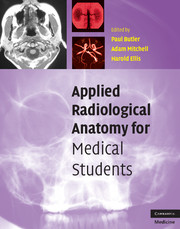4 - The breast
Published online by Cambridge University Press: 12 November 2009
Summary
Breast cancer is the commonest malignancy in women in Europe and the United States. In recent years, physicians and the media have encouraged women to practice self-examination, to have regular evaluation by a medical practitioner, and to participate in breast screening programs. This has resulted in the general population developing a heightened awareness of breast cancer and in turn presenting to the general practitioner with a variety of breast complaints. In order to evaluate properly such symptoms, there must be an understanding of the normal breast. This chapter serves to describe normal breast anatomy and the role of imaging techniques used to evaluate the breast.
Embryology
During the fourth gestational week, paired ectodermal thickenings called mammary ridges (milk lines) develop along the ventral surface of the embryo from the base of the forelimb buds to the hindlimb buds. In the human, only the mammary ridges at the fourth intercostal space will proliferate and form the primary mammary bud, which will branch further into the secondary buds, develop lumina and coalesce to form lactiferous ducts. By term, there are 15–20 lobes of glandular tissue, each with a lactiferous duct. The lactiferous ducts open onto the areola, which develops from the ectodermal layer. The supporting fibrous connective tissue, Cooper's ligaments, and fat in the breast develop from surrounding mesoderm.
At birth, the mammary glands are identical in males and females and remain quiescent until puberty, when ductal growth occurs in females under the influence of estrogens, growth hormones and prolactin. When pregnancy occurs, the glands complete their differentiation by eventually forming secretory alveoli.
- Type
- Chapter
- Information
- Applied Radiological Anatomy for Medical Students , pp. 31 - 35Publisher: Cambridge University PressPrint publication year: 2007



